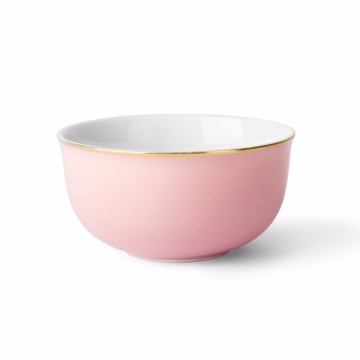Donburi: A Hearty Japanese Rice Bowl Delight
Donburi, often referred to as "rice bowl dishes," is a beloved and versatile category of Japanese cuisine. This comforting meal typically consists of a bowl of steamed rice topped with a variety of ingredients, often served with a savory sauce. Originating from Japan, Donburi has grown in popularity worldwide due to its simplicity, affordability, and wide range of flavor combinations. In this article, we’ll explore the origins, types, ingredients, and cultural significance of Donburi.
What is Donburi?
The word "Donburi" translates directly to "bowl" in Japanese, which is fitting because the dish is essentially a large bowl of rice served with a topping of meat, vegetables, or seafood. What makes Donburi special is its rich variety of toppings, which can cater to almost any taste preference, making it one of the most adaptable and accessible dishes in Japanese cuisine.
Origins of Donburi
While Donburi is now an integral part of Japanese cuisine, its roots can be traced back to the Edo period (1603-1868). It was during this time that individual rice bowls with different toppings became a popular meal among the working class. The dish became a convenient and inexpensive way for people to enjoy a fulfilling meal in a single bowl. Over time, Donburi recipes evolved to include a wide array of ingredients, each unique to the region or season.
Types of Donburi
There are many types of Donburi, each with its own distinct flavor profile. Some of the most popular varieties include:
- Oyakodon (親子丼)
Oyakodon, which literally means "parent and child bowl," is one of the most beloved Donburi dishes in Japan. It consists of tender chicken pieces simmered in a sauce made from soy sauce, sugar, and dashi (Japanese broth), then mixed with beaten eggs and poured over a bowl of steamed rice. The combination of chicken and eggs symbolizes the parent (chicken) and child (egg), making it a heartwarming dish enjoyed by many.
- Gyudon (牛丼)
Gyudon, also known as "beef bowl," is a dish consisting of thinly sliced beef cooked in a savory sauce made from soy sauce, mirin, and dashi. The beef is then served over a bowl of rice, often garnished with pickled ginger, green onions, and sometimes a raw egg. Gyudon is a popular comfort food in Japan, commonly found in fast food chains and restaurants.
- Katsudon (カツ丼)
Katsudon is a hearty and satisfying Donburi variety featuring a breaded and deep-fried pork cutlet (tonkatsu) served over rice and topped with a flavorful sauce made from eggs and dashi. It’s often enjoyed by those seeking a fulfilling, protein-packed meal and is a common comfort food.
- Unadon (うな丼)
Unadon features grilled eel (unagi) glazed with a sweet and savory soy-based sauce, served over a bowl of rice. This luxurious dish is often enjoyed during the summer months, particularly on the "Doyo-no-Ushi-no-Hi" (Midsummer Day of the Ox), which is associated with eating eel to beat the heat and restore energy.
- Tekkadon (鉄火丼)
Tekkadon is a type of Donburi that includes raw tuna (maguro), typically sliced into thin pieces and served over rice. Often, the tuna is seasoned with soy sauce or served with wasabi and pickled ginger. Tekkadon is popular among sushi lovers and is often found in coastal regions near the sea.
- Chirashidon (ちらし丼)
Chirashidon is a refreshing and colorful variation of Donburi, typically made with a variety of sashimi (raw fish) placed atop a bowl of sushi rice. The ingredients often include tuna, salmon, shrimp, and vegetables such as avocado and cucumber. Chirashidon is popular during celebrations like New Year’s Day in Japan.
Common Ingredients in Donburi
While Donburi recipes vary greatly, some common ingredients are frequently found in many versions of the dish. These include:
- Steamed Rice: The base of every Donburi dish is steamed white rice, which serves as the perfect canvas for the flavorful toppings.
- Meat and Seafood: Donburi can be made with a variety of meats, such as chicken, beef, pork, and even seafood like eel, tuna, and shrimp.
- Eggs: Eggs are a crucial ingredient in dishes like Oyakodon and Katsudon, where they are simmered with other ingredients to create a rich and creamy texture.
- Sauces and Seasonings: Soy sauce, dashi, mirin, and sugar are commonly used to season the ingredients, contributing to the sweet and savory flavor profile typical of Donburi.
- Vegetables and Garnishes: Pickled vegetables, green onions, and even a raw egg are often used to garnish Donburi, adding freshness and complexity to the dish.
Cultural Significance of Donburi
In Japan, Donburi is more than just a meal; it is an important part of the culinary landscape. It is a symbol of home cooking and convenience, offering both comfort and nostalgia for many people. Its adaptability has made Donburi a beloved dish among all generations, and it remains a staple in the Japanese diet.
Donburi is also often enjoyed as a communal dish. Whether shared at family dinners or eaten alone during a quick lunch break, the bowl of rice brings people together to enjoy a hearty meal. It is often seen in both casual eateries and fine-dining establishments, reflecting its widespread appeal.
Conclusion
Donburi is a quintessential Japanese dish that captures the essence of comfort food. With its wide variety of toppings and customizable flavors, Donburi offers something for everyone, from the savory Oyakodon to the luxurious Unadon. Whether enjoyed at home or in a restaurant, Donburi remains a staple in Japanese cuisine, providing both sustenance and satisfaction in a single bowl. If you’re looking to explore the flavors of Japan, Donburi is an excellent starting point—a dish that showcases the heart and soul of Japanese culinary traditions.







